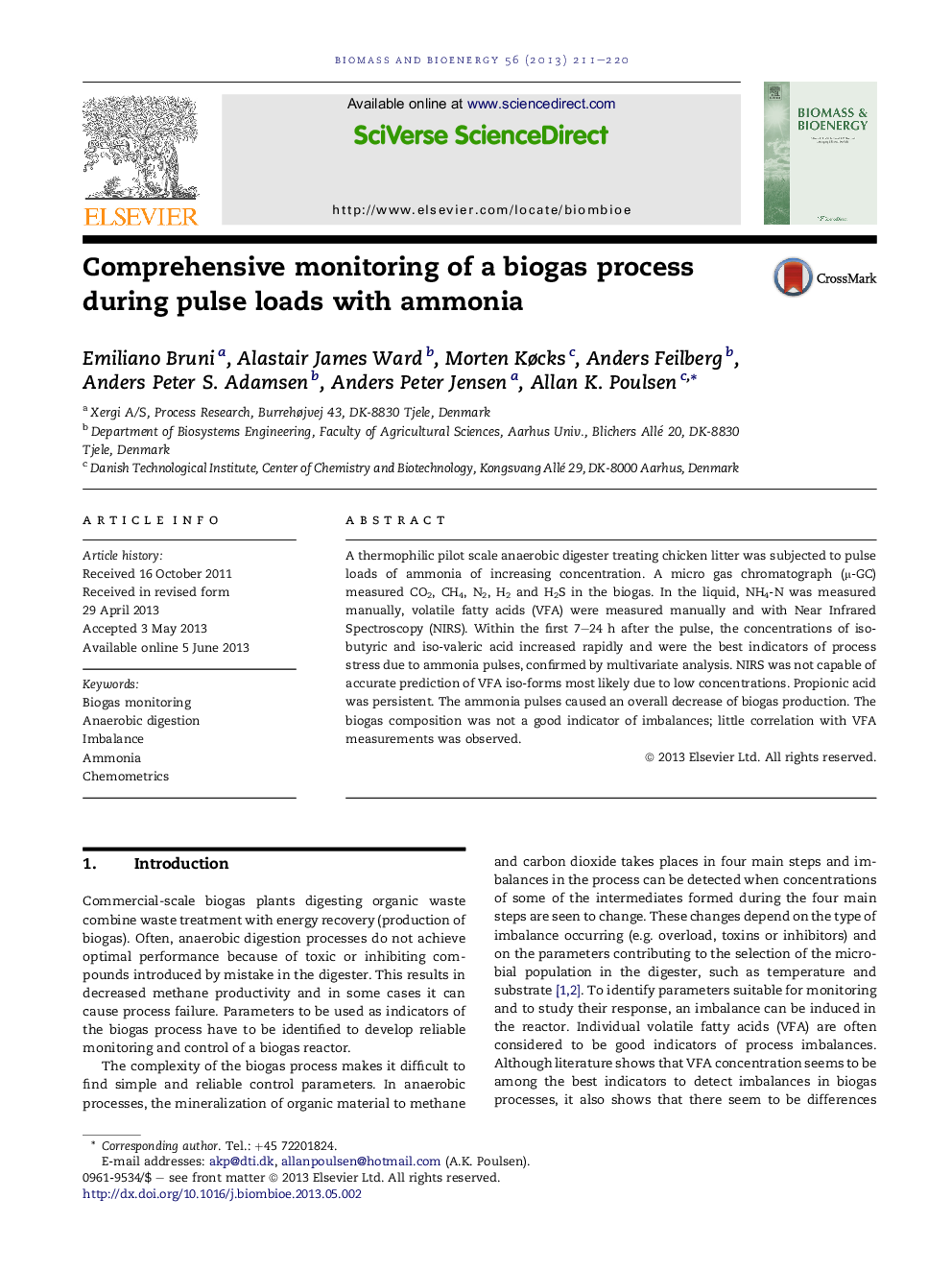| Article ID | Journal | Published Year | Pages | File Type |
|---|---|---|---|---|
| 7065127 | Biomass and Bioenergy | 2013 | 10 Pages |
Abstract
A thermophilic pilot scale anaerobic digester treating chicken litter was subjected to pulse loads of ammonia of increasing concentration. A micro gas chromatograph (μ-GC) measured CO2, CH4, N2, H2 and H2S in the biogas. In the liquid, NH4-N was measured manually, volatile fatty acids (VFA) were measured manually and with Near Infrared Spectroscopy (NIRS). Within the first 7-24 h after the pulse, the concentrations of iso-butyric and iso-valeric acid increased rapidly and were the best indicators of process stress due to ammonia pulses, confirmed by multivariate analysis. NIRS was not capable of accurate prediction of VFA iso-forms most likely due to low concentrations. Propionic acid was persistent. The ammonia pulses caused an overall decrease of biogas production. The biogas composition was not a good indicator of imbalances; little correlation with VFA measurements was observed.
Related Topics
Physical Sciences and Engineering
Chemical Engineering
Process Chemistry and Technology
Authors
Emiliano Bruni, Alastair James Ward, Morten Køcks, Anders Feilberg, Anders Peter S. Adamsen, Anders Peter Jensen, Allan K. Poulsen,
